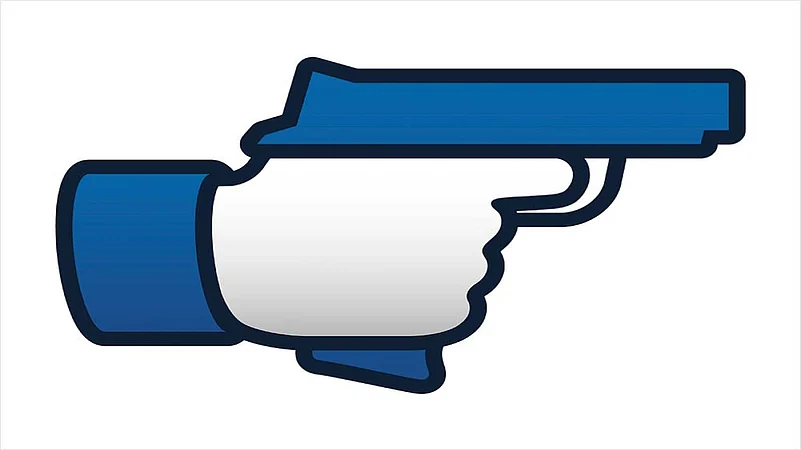In the run-up to the 2004 Lok Sabha elections, when late BJP leader Pramod Mahajan was setting up the high-tech war room at his residence, 7 Safdarjung Road, he told his party colleagues that the age of conventional elections was over—it was time to go online. A national voter database was prepared, lakhs of emails and SMSes were sent out and cell phones and landlines bombarded with pre-recorded voice messages of then Prime Minister Atal Bihari Vajpayee. Teams were assigned to monitor news channels 24/7 and forms filled, detailing time, date and name of channels airing “negative” stories. They were to be dealt with later by the media-savvy Mahajan. The BJP’s tech-driven ‘India Shining’ campaign, flopped in dramatic fashion despite the hype created around it and Mahajan had to take much of the blame for the no-show. But the campaign marked a tectonic shift in the way parties would approach elections in the future.
Since then, the BJP has mastered the art of using the digital media space—more than any other party in India—and transforming itself into a well-oiled war-machine that moulded opinions in the virtual world. From 2007 when the party’s IT cell was formally set up for the 2019 Lok Sabha elections, the BJP has aggressively used social media platforms like Facebook, Twitter and WhatsApp, weaponsing them to fight and win elections.
ALSO READ: War Of Angry Birds
Party general secretary J.P.S. Rathore, who was the Uttar Pradesh IT cell in-charge when the BJP won the state assembly polls in 2017, gives a peek into how the war was fought on social media. “Hamari rajniti thi ki chunav ke pehle voter ke dimag ko capture kar lo. Subah–shaam message bhejo. Jab dekhe, hamara chehra dekhe, humari baat sune (Our aim was to capture the mind of the voters. To message them night and day. Whenever they look, they should see us, hear our message).” Cut to 2021. The BJP has sent its combative IT cell chief Amit Malviya as co-incharge for West Bengal, the next big electoral battleground for the party. Incidentally, Malviya is also the first Indian politician to be called out by Twitter when a farmers’ protest video clip, tweeted by him, was tagged as ‘manipulated media’ in December.
Social media may have become the BJP’s biggest strength, other political parties too are catching up, albeit not as successfully as the saffron party yet. The war-weary Congress has promised to raise a five-lakh strong army of ‘social media warriors’ to take on the BJP’s digital might. The BJP-led government has taken the battle beyond the political with the ministry of home affairs inviting citizen volunteers to police online content.
As the farmers’ agitation has managed to attract global attention, warring hashtags have appeared on Twitter, triggering a face-off between the government and the social media platform. The question now being raised is whether the digital platform that the BJP has used so effectively over the years, has metamorphosed into a monster coming to bite it?

Vinit Goenka, former National co-Convenor of IT Cell says it’s not about biting the government or the party. “It is biting the nation,” he tells Outlook. For him, the fight against Twitter started much before the controversy over tweets related to the farmers’ agitation. He had flagged incendiary tweets by Gurpatwant Singh Pannu of Sikhs for Justice (SFJ), a US-based secessionist group, who ran a campaign on Twitter with the hashtag ‘Khalistan2020Referendum’, in a PIL in Supreme Court in April 2019.
ALSO READ: Made Of Tendentious Tripe
SFJ is the same organisation whose name had come up in trying to hijack the farmers’ protest to foment trouble on Republic Day.
Banned by the home ministry “as an unlawful association promoting and waging acts of terrorism against India” in 2019, Pannu’s tweets were tagged as ‘promoted’ by Twitter, which indicates that the posts were paid for by those running the handle to reach a wider audience. “Freedom of expression is one thing but wilfully promoting such subversive tweets for money is another,” says Goenka. He also sent a complaint to the National Cyber Coordination Centre chief, Lt Gen. (retd) Rajesh Pant, in July 2019, asking for an investigation into the matter. “The minute tweets are paid for they become propaganda, and if Twitter has taken money, it becomes an accomplice. Twitter must disclose money/business generated thereof,” he says. According to him, social media platforms like Twitter should be covered by reasonable restraints under law. “It should either be treated as a utility or as a publication that is bound by certain ethics and laws.”
ALSO READ: Rules Of The Game
This is something that the Congress agrees with. Party leader Manish Tewari concurs that Twitter is akin to an online publishing house and the same laws should apply as regular publications including newspapers and magazines. “Platforms like Twitter should be responsible for the content. It cannot hide behind protection of US laws. A user cannot just say anything and operate on principle of anonymity. This is not freedom of expression, but cowardice,” he says.
The Congress too has had its share of controversies over the issue and faced the charge of muzzling dissent many a time. It was during the UPA rule in 2009 that Kapil Sibal as minister for information and technology had inserted Section 66A to the IT Act, making it a much abused and criticised provision. Ultimately struck down by the Supreme Court in 2015, the provision allowed police to arrest anyone posting “annoying and offensive” content on social media. The punishment was three years imprisonment.
ALSO READ: Bird’s Eye Stew
“Whenever governments get insecure, they crack down on free speech as one can see from the trajectory of the country in the past 70 years. The establishments and the state tend to react with measures like internet shutdowns, proscribing content and intimidating people whose views are not to your liking. However, differentiation has to be made between what is anti-government and what is anti-national,” Tewari says.
Head of Digital India Foundation and former head of BJP IT cell Arvind Gupta says the social media platforms have become “really big and very dominant”. According to him, it is a matter of concern that they are moving above the law of the country. “These platforms are exercising more power over our democracy than the citizens themselves. We have to watch out for platform dominance and platform bias to ensure it doesn’t seep into our democratic outreach,” he says.
ALSO READ: Chat Up Privacy
The platforms have to adhere to the law of the land. “Section 66 A was repealed but at the end of the day anything that is hate speech or against national security and public order is still not permitted. In the current context, the government is well within its right to seek either censoring, or blocking of content/ users who are trying to gain from outside India and create public disorder or promote hate speech. Twitter banned President Trump, post-facto rather than pre-facto, citing he could incite violence. Here the government is taking preventive steps since all kind of fake news like genocide is being promoted. It takes a proactive government to prevent that,” Gupta adds.
Nivedita Menon, professor of political thought at JNU says all states fear free-thinking citizens. She agrees that all governments have done the same but says that “separation of power” between the three pillars judiciary, executive and legislature is finished under the BJP government. “It has become one government, one voice. Any kind of critical thinking is termed anti-national. Criticism of the government taken as criticism of the nation. The government has taken over the legitimacy of the nation itself,” she adds.
***
Ashish Kothari, Environmentalist and co-founder, Kalpavriksh
Given the enormously greater resources with government, corporations and others who are behind ecologically destructive activities, their ability to dominate and manipulate media is much greater. This is true of conventional media also, but with social media, the ability to instantly reach millions of people, to create bubbles of misinformation that continuously reinforce each other, and the often knee-jerk reaction nature of the responses, make this even more dangerous. The present government has become increasingly more sophisticated and resourceful in such manipulation, including the deliberate maligning of democratic dissent….Social media can never be a replacement for ‘slow’, conventional media that enables depth, consideration, and complexity.
Prof Charan Singh, CEO, Foundation for Economic Growth & Welfare and ex-professor, IIMB
Social media is one place where you can get unfiltered opinion from people across the spectrum. In all media there are certain limitations, including TV and newspaper. Social media also has its limitations and must be used carefully. Some e-group discussions ran for several weeks with international participation and some have been published as research books. More such books are in the process of being compiled on differet issues such as competition law, civil services reforms, economic resilience etc.
















